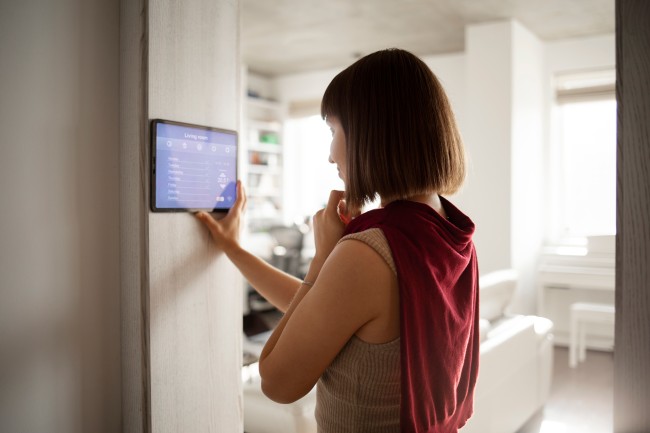
As the hospitality industry takes center stage in luxury travel, defining the optimal guest experience has never been more worth considering.
Smart rooms and an intuitive connection between various devices have become essential for creating a personalized environment that guests will remember and cherish.
Leveraging the Internet of Things (IoT) can provide powerful insights into how travellers use these spaces, translating into responsive services that contextualize their stay.
Juan Bremer explores how IoT is helping hoteliers create smart rooms to enhance traveler comfort and satisfaction in urban areas and resort hotels worldwide.
Introducing IoT in the Luxury Travel Industry
The luxury travel industry is known for its high-end amenities and personalized experiences. With the introduction of the Internet of Things (IoT) technology, these experiences can now be taken to the next level.
Guests can enjoy fully automated and personalized services by integrating IoT into the luxury travel industry. Everything can now be done with a button, from booking flights to hotel rooms and requesting room services.
This enhanced level of connectivity also allows travellers to stay connected with their homes and businesses while on the go. Juan Bremer emphasizes the endless possibilities for creating one-of-a-kind travel experiences.
Benefits of Integrating IoT into Smart Rooms
The potential benefits of integrating IoT into smart rooms are vast and exciting. By implementing these technologies, users can improve their daily lives and make their spaces more efficient, safer, and comfortable.
With IoT, devices can communicate, creating a seamless and integrated experience. From controlling lighting and temperature to detecting intruders and monitoring air quality, smart rooms equipped with IoT are transforming how we interact with our environments.
Moreover, the insights IoT devices can provide through data analysis enable users to make informed decisions and optimize their energy usage, saving money and reducing their carbon footprint.
The seamless integration of IoT into our homes offers a glimpse into a future of convenience and sustainability.
Types of Technology Used for Smart Room Automation
The future is here, and it’s evident in the innovations that are now available in our homes. Smart Room Automation technology is revolutionizing how homeowners interact with their living spaces.
Several types of technology can make your home more comfortable, efficient, and secure, from lighting to heating, sound to security. For instance, a voice-controlled assistant can help you dim the lights, set the thermostat, or lock the front door.
Or, you can use a touchscreen remote to adjust the temperature, stream music, or even monitor who’s at your door. With the ability to customize your smart home to your preferences, you’ll be amazed at how much time, energy, and stress you can save!
Examples of How IoT is Already Being Used in Smart Rooms
The Internet of Things (IoT) has revolutionized interactions with rooms in our homes and beyond. Smart rooms, in particular, are a testament to the limitless possibilities of IoT technology.
From controlling lighting and temperature to monitoring safety and security, smart rooms have various features that allow for a seamless and personalized living experience.
Examples of IoT already being used in smart rooms include voice-activated assistants like Amazon’s Alexa and Google Assistant, smart thermostats like Nest, and security systems that can send phone alerts.
With such advancements, it’s no surprise that more and more people are embracing smart homes and incorporating IoT technology into their daily routines.
Ensuring Security and Privacy with IoT-Powered Smart Rooms
The concept of smart rooms has become increasingly popular. With IoT technology, these rooms can be equipped with smart devices that make life simpler and more convenient.
The possibilities are endless, from controlling the temperature and lighting to monitoring security and privacy. However, with the rise of smart rooms comes the need to ensure that security and privacy remain top priorities.
Advanced encryption techniques, strong passwords, and other protective measures make it possible to maintain a secure and private environment for everyone. Juan Bremer reminds us to prioritize safety and security to maximize this innovative technology.
Overcoming the Widespread Adoption of IoT-Powered Smart Rooms
As technology advances, the concept of IoT-powered smart rooms has become increasingly popular. However, the widespread adoption of this innovation is not without its challenges.
One of the biggest obstacles to overcome is security concerns. With all the information being collected and shared, ensuring the infrastructure is secure from potential threats is essential.
Additionally, there is the issue of compatibility. Many devices may not be suitable for integration into a smart system, making it difficult to automate the room fully.
Despite these challenges, the advantages of a smart room are numerous, from increased energy efficiency to greater convenience. Overcoming these obstacles will ensure a future where IoT-powered smart rooms are commonplace in every home.
Final Thoughts
The future of luxury travel looks bright with the integration of IoT-enabled smart rooms. The possibilities are endless when it comes to the convenience and comfort that these rooms can offer.
Imagine walking into a room where the lighting, temperature, and music automatically adjust to your personal preferences and where you can control everything from your smartphone.
IoT-enabled smart rooms can help personalize your trip by tracking your habits and preferences and providing tailored recommendations for activities, dining, and entertainment.
These rooms will redefine how we experience luxury travel and take customer satisfaction to a new level. The future is bright for those who embrace this exciting new technology.
